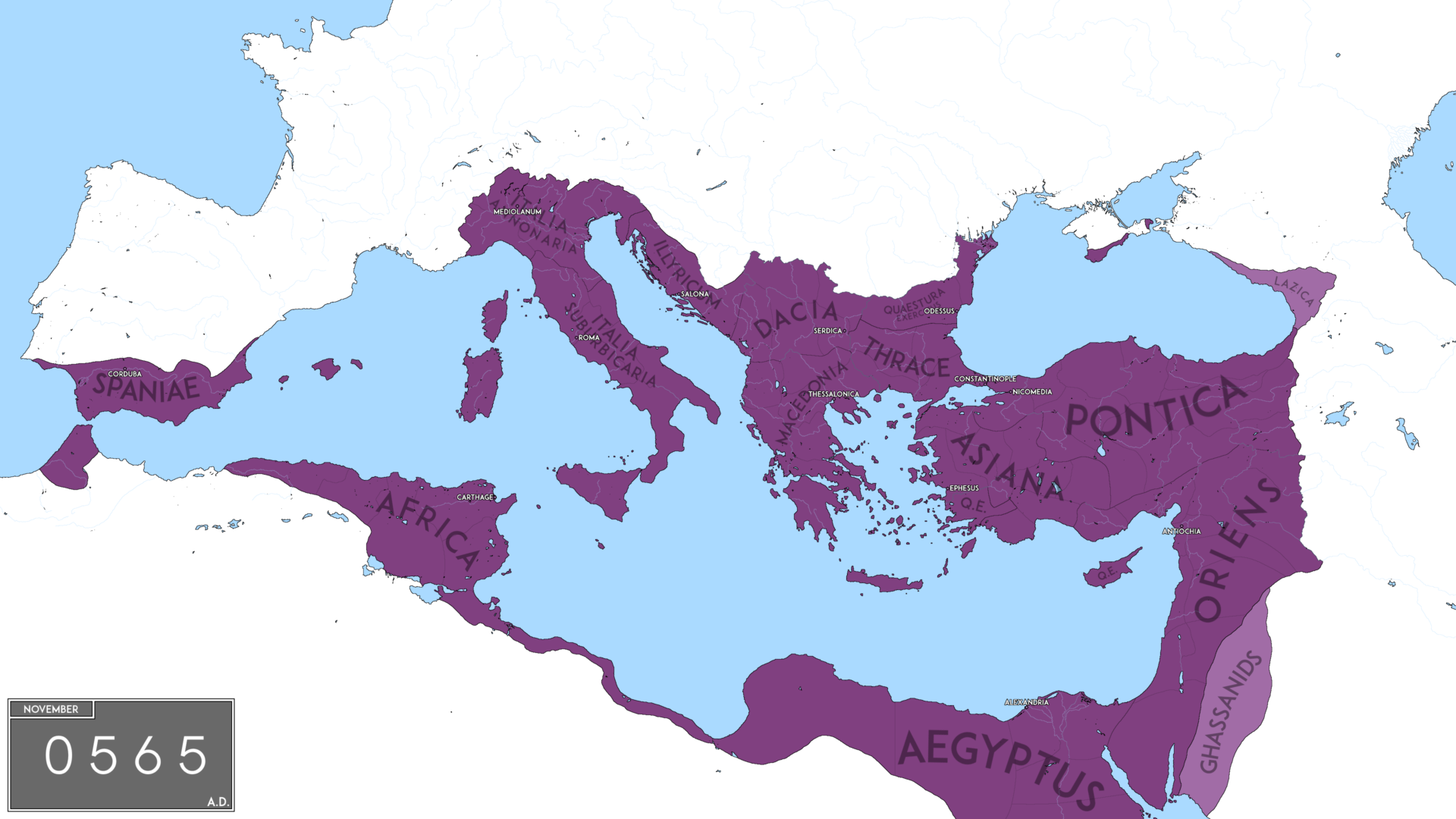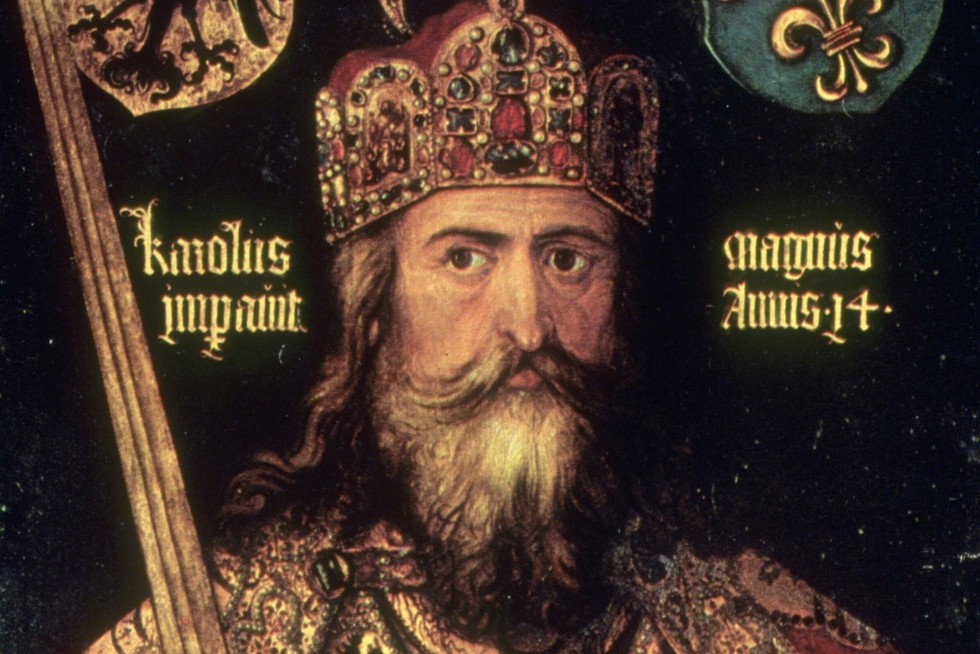In the 18th century, the well-known French philosopher Voltaire made a famous remark about the Holy Roman Empire that has been repeated many times over the years. While his statement suggested that the empire was neither holy, Roman, nor an empire, this view oversimplifies the rich history of this complex polity. After the Western Roman Empire‘s fall, the idea of Rome persisted, evolving through diverse rulers and cultural influences. Over time, Germanic kings maintained Roman traditions while ruling over former Roman territories.
Charlemagne’s rise in the Frankish Empire marked a revival of Roman ideals in Europe. Crowned as King of the Romans, his empire sought to reconnect with the grandeur of Rome by blending Roman law with contemporary governance. This Roman legacy influenced the way Western Europe was structured for centuries. Though Charlemagne’s empire was not a direct continuation of ancient Rome, it embraced many of its principles, leaving a lasting impact on European history.
Key Takeaways
- The Holy Roman Empire is complex and not accurately described by Voltaire’s quip.
- Rome’s legacy persisted through Germanic rulers and Charlemagne’s reign.
- Charlemagne’s empire revived Roman ideals, impacting European governance.
Common Mistakes About the Holy Roman Empire
Voltaire’s Remark on the Empire
Voltaire, a famous French philosopher, once made a clever comment about the Holy Roman Empire. He said it was neither holy, nor Roman, nor an empire. This statement has been widely shared and repeated over the years. Though humorous, it does not fully capture the complex history of the empire. Voltaire’s view largely reflected the conditions of his own time, rather than the centuries of history that preceded him.
How Long the Empire Lasted
Despite Voltaire’s quip, the Holy Roman Empire was a significant political entity that lasted for centuries. It did not crumble suddenly but instead evolved over time. Historically, even after what many consider the “fall” of the Western Roman Empire in 476 AD, the idea of Rome persisted. Various rulers of Germanic and other ethnic backgrounds continued to embrace Roman laws and traditions. By adopting these elements, they kept the essence of Roman governance alive.
Views During Voltaire’s Era
During Voltaire’s time, the Holy Roman Empire was often seen as a relic of the past. Many perceived it as a fading symbol rather than a robust continuation of Rome’s spirit. The empire had become a loose confederation of diverse territories in Europe, with its power much diminished. This perception influenced Voltaire and others who, living in the 18th century, often overlooked the empire’s earlier contributions and endurance.
The Shift from Roman to Germanic Authority
The Collapse of the Western Roman Dominion
The Roman Empire in the West did not end in one swift event. Although in 476 AD, Romulus Augustulus, the last Roman emperor of the west, was dethroned by Odoacer, a Germanic leader, the Roman influence persisted. The Eastern Roman Empire, known as Byzantium, continued to thrive for centuries. Odoacer, acknowledging Emperor Zeno of the East, ruled Italy as a representative. Byzantium’s endurance highlighted that the Roman essence did not disappear immediately.
Rule Under Odoacer and Theodoric
Odoacer’s reign was short-lived, as Theodoric the Great of the Ostrogoths, sent by Emperor Zeno, took control of Italy. Theodoric managed to preserve the Roman administrative and legal systems, maintaining Roman senators in influential roles. He retained Roman customs for Roman citizens while allowing Gothic traditions for the Germanic populace. This form of government, combining Roman and Gothic elements, set the stage for future rulers seeking legitimacy by associating with Rome’s legacy.
Blending of Gothic and Roman Influences
The Gothic War initiated by Justinian of Byzantium sought to reunite the East and West. Although successful, it left Italy vulnerable, allowing the Lombards to invade. Like the Ostrogoths, the Lombards mixed Roman administrative practices with their own military leadership. The use of Latin in official matters and Roman legal principles continued to be essential. These practices were not confined to Italy; other Germanic rulers, like the Franks, adopted Roman traditions to solidify their rule and secure acceptance from the Romanized population of Gaul. The Franks played a crucial role in preserving and propagating Roman ideals and governance structures across Europe.
The Byzantine Empire’s Reach

Justinian’s Campaign in Italy
Emperor Justinian, in the mid-6th century, embarked on a significant mission to restore control over former Western Roman territories. This effort is known as the Gothic War. His primary goal was to re-establish imperial rule and bring unity. Justinian’s forces were eventually successful in capturing Italy. Despite this victory, the warfare left the region in ruins, making it vulnerable to future invasions.
Lombard Reign in Italian Lands
After the conclusion of Justinian’s military engagement, the weakened state of Italy attracted new threats. In 568, the Lombards invaded and established control over large areas. They followed a governance model that combined elements of Roman administration and their own Germanic military traditions. The Lombards ruled regions of Italy for around two hundred years, even adopting certain Roman symbols and traditions in their governance.
The Frankish Kingdom and Roman Heritage
Clovis and the Merovingian Dynasty
Clovis, the founder of the Frankish Kingdom in the late 5th century, played a crucial role in shaping the future of his realm. He converted to Catholic Christianity, which helped him gain the acceptance of the Gallo-Roman population in Gaul, now known as France. Clovis and his successors from the Merovingian Dynasty adopted many Roman institutions, blending them with Frankish customs to create a unique and stable governance system.
Papal Relations with the Franks
As the Frankish Kingdom evolved, the papacy sought a strong ally. When Pepin the Short, father of Charlemagne, became ruler, he deposed the last Merovingian king with the support of the Pope. This new alliance was solidified when Pepin helped defend Rome from the Lombards. This relationship marked a turning point, as the Franks became protectors of the papacy, further integrating the church into their kingdom’s fabric.
Charlemagne’s Rise to Power
Charlemagne rose to power after Pepin’s death in 768. By 800, he was crowned “King of the Romans,” signifying a revival of Roman ideals in his realm. Charlemagne centralized administration and legal reforms, merging Roman traditions with Frankish governance. The cultural revival known as the Carolingian Renaissance flourished under his rule, focusing on Latin literature, philosophy, and law. Although the Byzantine Empire viewed his reign as a threat, Charlemagne’s empire managed to maintain a lineage of Western Rome through these efforts.
Charlemagne’s Empire and the Legacy of Rome
Crowned as Emperor of the Romans
In the year 800 AD, Charlemagne, ruler of the Frankish Kingdom, was crowned as the Emperor of the Romans. This ceremony took place on Christmas Day in St. Peter’s Basilica. During this time, the Eastern Roman Empire was led by Empress Irene, a leader known for her political ambitions and controversial rise to power. Her rule was viewed with skepticism by many in the West, leading the Pope in Rome to favor Charlemagne as the rightful Roman Emperor. This coronation marked a symbolic revival of Roman ideals in Western Europe, although not a direct continuation of the ancient Roman Empire.

The Carolingian Cultural Revival
Charlemagne’s reign saw a cultural and intellectual revival known as the Carolingian Renaissance. This movement was characterized by the renewed interest in Latin literature, philosophy, and law. Roman texts and educational practices were promoted, helping to preserve Roman intellectual heritage. Scholars were encouraged to study and disseminate Roman works, ensuring that the cultural achievements of ancient Rome would influence future generations.
Preserving Roman Systems
Charlemagne’s administration incorporated many elements of Roman governance. He established a network of local officials known as counts to manage regions, echoing the Roman provincial system. Legal reforms during his reign used traditions from earlier Roman legal codes, creating a fusion of Roman and Frankish law. By doing so, Charlemagne ensured the continuity of Roman institutional practices under his rule. His empire, later known as the Holy Roman Empire, carried forward the legacy of Western Rome in terms of territorial reach, language, law, and the concept of Imperial rule.
Political Relations with the Byzantine Empire
The Reign of Empress Irene
Empress Irene of Athens ruled the Byzantine Empire with determination and a strong will. Originally acting as regent for her son, Constantine VI, she seized full control of the throne in 797 by having him blinded and likely killed. This shocking action created significant dissent, especially in the West. Many, including Pope Leo III, did not recognize a woman’s legitimate claim to the imperial title. Consequently, the Pope’s support began shifting toward Charlemagne, leading to increased tensions between the East and West.
Possible Marriage Alliance between Charlemagne and Irene
There were rumors of a potential marriage between Charlemagne and Empress Irene, which could have reunited the Western and Eastern Roman Empires under a single rule. Such an alliance could have given Charlemagne the legitimacy of a true Roman Emperor and provided Irene with the necessary military support to strengthen her position. Yet, significant obstacles stood in the way. Pope Leo III had crowned Charlemagne as Emperor because of his view of Byzantium as illegitimate under Irene. A marriage would have complicated this stance, forcing the Pope into a difficult political position. Additionally, strong opposition from Irene’s court, especially from her adviser Nicephorus, led to her eventual overthrow and exile. These factors ultimately prevented the union from materializing.
Final Reflections on Imperial Legacy
The Holy Roman Empire, often dismissed by critics like Voltaire, demonstrates a significant pattern of continuity in imperial legacy throughout history. Contrary to Voltaire’s critique, the empire maintained an important link to Rome’s enduring influence. Throughout its existence, the empire embraced Rome’s legal, political, and cultural structures, serving as a bridge between the ancient Roman world and medieval Europe.
When considering the fall of Western Rome in 476 AD, it’s vital to recognize that its spirit lingered on, particularly through the Germanic kingdoms that rose on its former territory. These kingdoms, including the Ostrogoths and Lombards, adopted Roman traditions and governance, maintaining continuity in the midst of change. Theodoric the Great, for instance, upheld Roman legal and administrative practices, asserting a Roman identity even in a Germanic context.
In a similar vein, the Frankish Kingdom under Clovis blended Roman and local traditions, setting the stage for the Carolingian Renaissance. This period saw a revival of Roman culture through the promotion of Latin literature and Roman law, further highlighting the deep-rooted connection to Rome’s heritage. Despite political transformations, this cultural revival underscored the continuity of the Roman spirit, its values preserved and adapted to new contexts.
The crowning of Charlemagne as Emperor marked a pivotal moment. His reign sought to restore the glory of Rome, centralizing administration, and aligning with Roman principles and governance frameworks. Although his empire wasn’t a direct continuation of Rome, it consciously revived Roman ideals, asserting the image of a unified Christian empire under a divine ruler, much like ancient Rome.
This legacy persisted as rulers aligned themselves with the Roman identity for legitimacy and power. Even potential unions, like the speculated alliance between Charlemagne and Empress Irene, highlight the ongoing desire to connect with and revitalize Roman imperial heritage. Despite never coming to fruition, such alliances reflect the diplomatic and cultural aspirations to continue the Roman legacy beyond simple territorial claims. Through these historical nuances, the Holy Roman Empire reveals its role as a vital successor and custodian of Rome’s enduring legacy.
